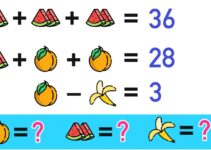One of the challenges undergraduate students face when they first start college is the volume and complexity of academic literature they’re expected to read. For many, the articles and books they have to read as part of their course are very different from what they’re used to and can take time to get to grips with. Adopting some critical reading and reviewing tactics can really help, so we’ve pulled together a few techniques and strategies that you can use when reading your course material.
Page Contents
Consider the central question

Every piece of academic literature has a central question that the author or authors are seeking to answer. In a research paper or academic book, the author will set out their main argument in the introduction and supplement this argument throughout the text with supporting evidence and earlier research findings.
Before you dive deeper into any piece of research, there are some quick ways you can identify the main ideas or arguments the author is putting forward. First, take a look at the abstract or summary of a paper, or the opening paragraphs of a chapter. Then examine the index, take note of the structure and section headings, and consider any keywords or terms that appear frequently.
This will help you get to grips with some of the major themes, making it easier for you to follow along, complex paper or chapter without getting lost.
Scanchapters before reading them in full
What is the chapter about? What’s the author seeking to establish? How is it structured? Answering these questions before starting to read a chapter in full can help give you context and insight into the material. Skimming through book chapters first can give you an idea of whether the book contains enough of the information you’re looking for, and which sections it’s most likely to be found in.
Make use of critical reading strategies

Source: unsplash.com
As an undergraduate, you’re going to be reading a lot and not every piece of literature you read will be useful. Whilst some texts you find during your literature search might contain lots of relevant information, others might only offer snippets of supporting material. So, it’s important to know exactly what you are looking for to quickly determine whether the book or paper is going to be relevant. Reading strategies including skim-reading and scanning for key concepts can help you ignore non-relevant information and focus on the parts that will be most useful to you.
Skimming is a good reading technique to get a quick overview and basic understanding of the entire text in a short amount of time. It involves speed-reading the text and taking note of sections that might contain information on a topic relevant to your research.
Scanning is the reading technique employed when you are looking for specific pieces of information (facts, statistics, quotes, etc).It requires knowledge of specific keywords or concepts that are central to your research. These keywords or concepts then become your search terms when scanning the text.
Scholarcy can help when it comes to isolating and understanding the key concepts, main takeaways and important statements in a text. The summaries generated by these tools also serve as useful refreshers when you come to write an essay or revise for an exam.
Highlight or annotate the text
While this may seem obvious, many students don’t highlight or annotate the texts they read, which makes it easy to quickly forget important information. Unlike other formats, academic texts are usually extensive, making it almost impossible to retain all key facts and findings. Highlighted sections and annotations can give you a useful snapshot of the relevant sections uncovered during your first reading. This makes the process of re-reading and examining the text more closely much simpler. Your annotations can alsoinclude related questions and ideas that you want to consider during a tutorial or when you come to write your essay.
The three-pass approach

Source: unsplash.com
A paper published by Stanford University suggests a useful three-pass approach to fully understand and analyze a piece of academic literature. As the name suggests, the technique divides the process into three stages:
First Pass
The first pass is essentially a brief preview of the text. Here, you should simply glance through the text to get a sense of its contents, paying attention to the abstract, introduction, section headings, and references. This will help you understand the purpose, structure, and nature of the material you’re about to read.
Second Pass

Source: unsplash.com
The second pass is a closer reading of the full text, paying closer attention to key themes, arguments, and concepts. Here, you can apply a reading technique such as skimming or scanning to identify key information. It’s important to get a clear understanding of the ideas expressed in the paper at this stage. Making notes about the main ideas in your own words can help reinforce your understanding.
Third Pass
The third pass is the final stage, which is more concerned with analyzing the text and challenging assumptions. At this point, it’s helpful to write a summary of the paper or chapter in your own words. This will help to build your knowledge of the author’s main arguments and the connection between them. It also helps to highlight any inconsistencies in the work.
Establish Connections

Source: unsplash.com
Examine the text for connections to your own understanding, experience, and beliefs as well as to other literature.
Talk about your reading
Tell others about what you’ve learned from reading the text. Talk to your tutor or peers about it and participate in group discussions. This will really help to reinforce your understanding of the material you’ve read.





